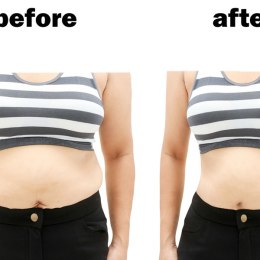Why downtime may not be as straightforward as it seems, and how you can clearly articulate the meaning of this to your clients.
From a light chemical peel to hydradermabrasion, these treatments may seem fairly moderate in their intensity, and are commonly referred to as “no downtime treatments”, but what truely is downtime?
How do you manage a client who is unhappy with the short-term redness immediately after their facial?
What about the client who has an event to go to the same day, and is looking for a freshen-up, but your post-treatment recommendations is to avoid makeup for 24 hours?
How do you ensure you are on the same page as the client before commencing treatment?
We as an industry are receiving more people who are seeking minimal downtime but achieveable results, and besides the innovative technology that surrounds this industry, communication is still a crucial factor when performing the initial consultation, from informed consent, through to performing the treatment and providing aftercare instructions.

Having the ability to articulate to your client what downtime is involved with the proposed treatment truely begins in the initial encounter or consultation with the client, when rapport is established. From understanding their lifestyle habits, profession, through to understanding who they are as a person can truely contribute to selecting a treatment that will benefit the presented concern, but also the client themselves.
To discuss further, we spoke with university qualified Dermal Clinician, Isabella Amirikhas, to share her thoughts on why practitioners should consider explaining downtime to clients in further detail.
Is ‘downtime’ in your opinion a straightforward term? Or can it vary based on the treatment provided and ideal outcomes?
I believe ‘downtime’ is not necessarily a straightforward term. It can be varied and requires the practitioner to appropriately educate their client on the specifics of their treatment downtime. As many of us know, downtime can be days, weeks, even months, and may include peeling, redness and mild to moderate discomfort. Therefore, it is highly important to ensure clients understand what ‘downtime’ is expected from treatments, reiterating this at each appointment in order to manage outcomes and expectations.
What considerations should practitioners make when selecting treatments?
There is an array of considerations that practitioners must make when selecting ideal treatments for their clients. It is important to determine the client’s skin type, concerns and expectations first and foremost. It is common for clients to have expectations from treatments that exceed the potential outcome. However, many factors also play a key role in deciding if a treatment is suitable for the client, such as lifestyle, medical history, adherence to their practitioner’s recommendations and treatment risk factors. After taking these factors into consideration, a practitioner must also regard whether the client is willing to have downtime. Some treatments do require more downtime than others and some clients may not be able to adhere to this due to lifestyle, work or other short and long term commitments.
How do you explain what downtime is to your clients?
Read SPA+CLINIC’s latest issue here:
There are 5 ways you can catch up with SPA+CLINIC
- Our quarterly print magazine, delivered to your door. Subscribe here.
- Our website, which is updated daily with its own completely unique content and breaking news.
- Our weekly newsletter – free to your inbox! Subscribe here.
- Our digital magazine – click here to view previous issues.
- Our social media – see daily updates on our Instagram, Facebook & Linkedin




